Does Kiva Have a Place in a Land of Wealth?
March 21, 2013
After 5 straight weeks of gray skies, cold winds, and not a drop of sunshine, spring is finally here! Leaves are emerging and flowers are starting to bloom from the previously barren landscape. The warm weather also means I can finally lose my heavy winter coat for a slightly lighter coat.
March 20 marks the start of Novruz, the Persian New Year. Around the country semeni are displayed sprouting, symbolizing the rebirth of the land and hopes for a bountiful harvest. (More about Novruz in a future post!)
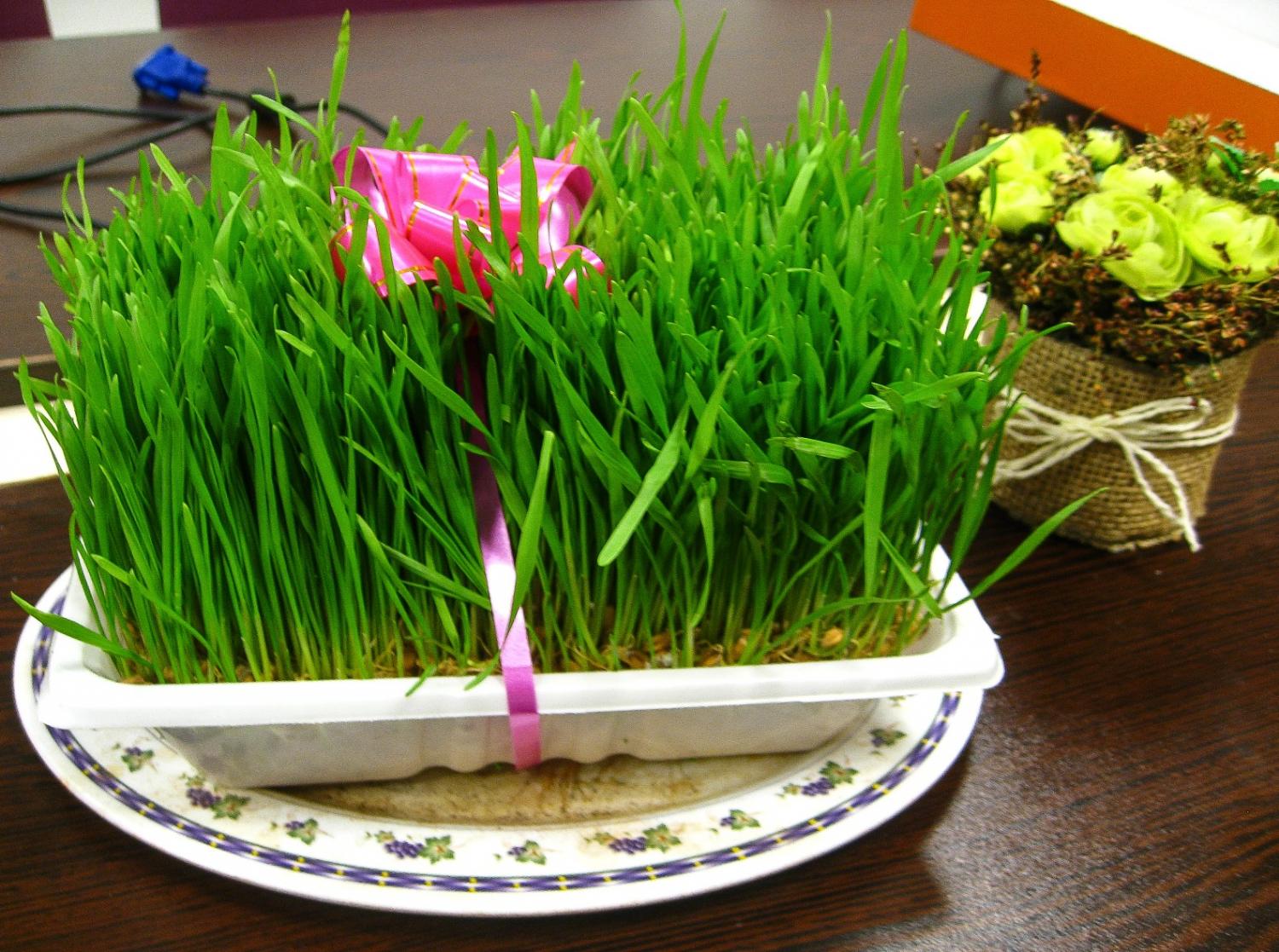
During the course of my client visits in the far regions, I have come to realize the importance the land has to the people here. Equally important is the access to microcredit. Both stories are interconnected and as we shall see tragically overlooked. To paint the picture, let’s explore the economics of Azerbaijan.
The Good
By top-line standards, Azerbaijan is doing relatively well. It is the 3rd wealthiest Soviet satellite country by GDP PPP (after Belarus and Kazakhstan). Oil accounts for 94% of Azerbaijan’s export revenues. This led to Azerbaijan being the world’s fastest growing economy between 2006 and 2008.
Here we see a 10 year chart of oil prices – that huge spike in the middle was a windfall for the country. Since then, oil prices have remained stable keeping the state oil fund, Sofaz, flush with cash.
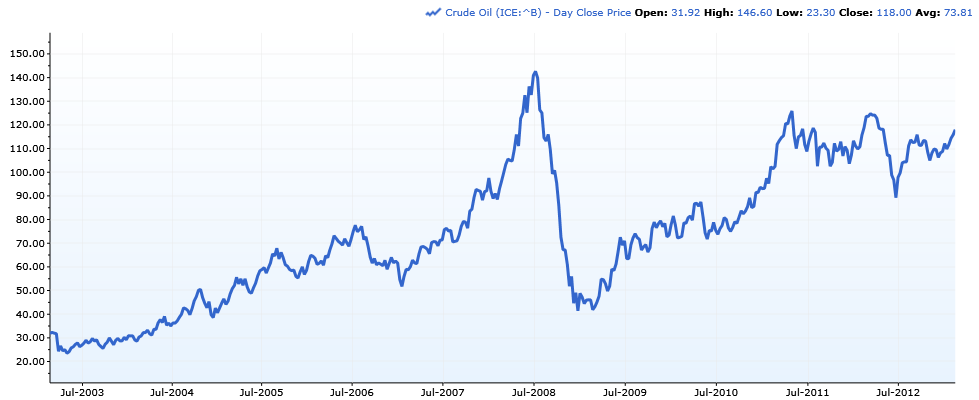
Brent Oil prices; Source: S&P Capital IQ
The Bad
However, the future is not looking so bright. Production of oil has stagnated to the point where it declined by 5.3% in 2012. The numbers get worse: oil prices will fall below the $100/barrel mark by the end of 2015. The World Bank, in fact, predicts that “most of Azerbaijan’s oil resources are expected to be used up in the next ten years.”
For a country which experienced double digit GDP growth just a few years ago, the Economist Intelligence Unit predicts growth of only 2.9% between 2013 and 2017. With the clock ticking, Azerbaijan is frantically looking to diversify its economy in any way possible.
First Tracks in the Snow
Tourism is the flagship initiative, with the capital Baku the epicenter of the transformation. Azerbaijan symbolically put itself on the cultural map when it hosted the wildly popular 2012 Eurovision Contest, after local duo Ell & Nikki won the contest in 2011 with their song Running Scared (I sense some irony there). The final was held in the newly constructed waterfront Crystal Hall, which more recently hosted Shakira, Rihanna, and J-Lo (who apparently loves Baku).
The mad construction happening in Baku (which I detailed in my last Kiva post) is a quixotic effort to move from an industrial to commercial based economy. In this sense, it is following closely in the footsteps of the UAE, which is a popular getaway for Azeris.
Meanwhile, three hours north in the lower Caucasus lies Azerbaijan’s very first ski resort, Shahdag, which opened in January 2013. While currently only servicing two lifts and one hotel, from the top construction of a massive complex can be seen. Ski instructors, chefs, and hotel managers have been flown in from Europe and once completed the complex will rival the popular resorts of neighboring Georgia.

Reaching for the Stars
Attempts to enter the technology sector are also underway. As per usual, the government has done this in grand style by launching its first satellite, Azerspace 1, on February 7. The $230 million investment, built by a US-based company and launched in the South American country of French Guiana, will purportedly bring in $650 million over the next 15 years in licensing revenue.
Just last week, Samsung Engineering announced the construction of a $630 million fertilizer plant in Azerbaijan. A joint venture with Belarus to produce LED equipment in Baku has also been discussed. Things seem to be going well.
In a booming economy like this, does microfinance have a place?
Grounded Realities
The fact is, whatever developments make the headlines won’t matter for most in this country.
40% of the workforce is employed in the agriculture industry, compared with just 2% for the oil industry. However, it accounts for only 5.5% of the country’s GDP. This disparity is a critical issue not being properly addressed.
During the Soviet era, farms were government managed and highly subsidized. With the fall of communism, land became privatized and agriculture collapsed. By 1997, productivity was at 60% of the (already low) Soviet levels. Running a large farm individually is costly and farmers had little knowledge of the agricultural economy. At this critical juncture, government support was nonexistent as the country was crippled by political chaos and a bloody war with Armenia.
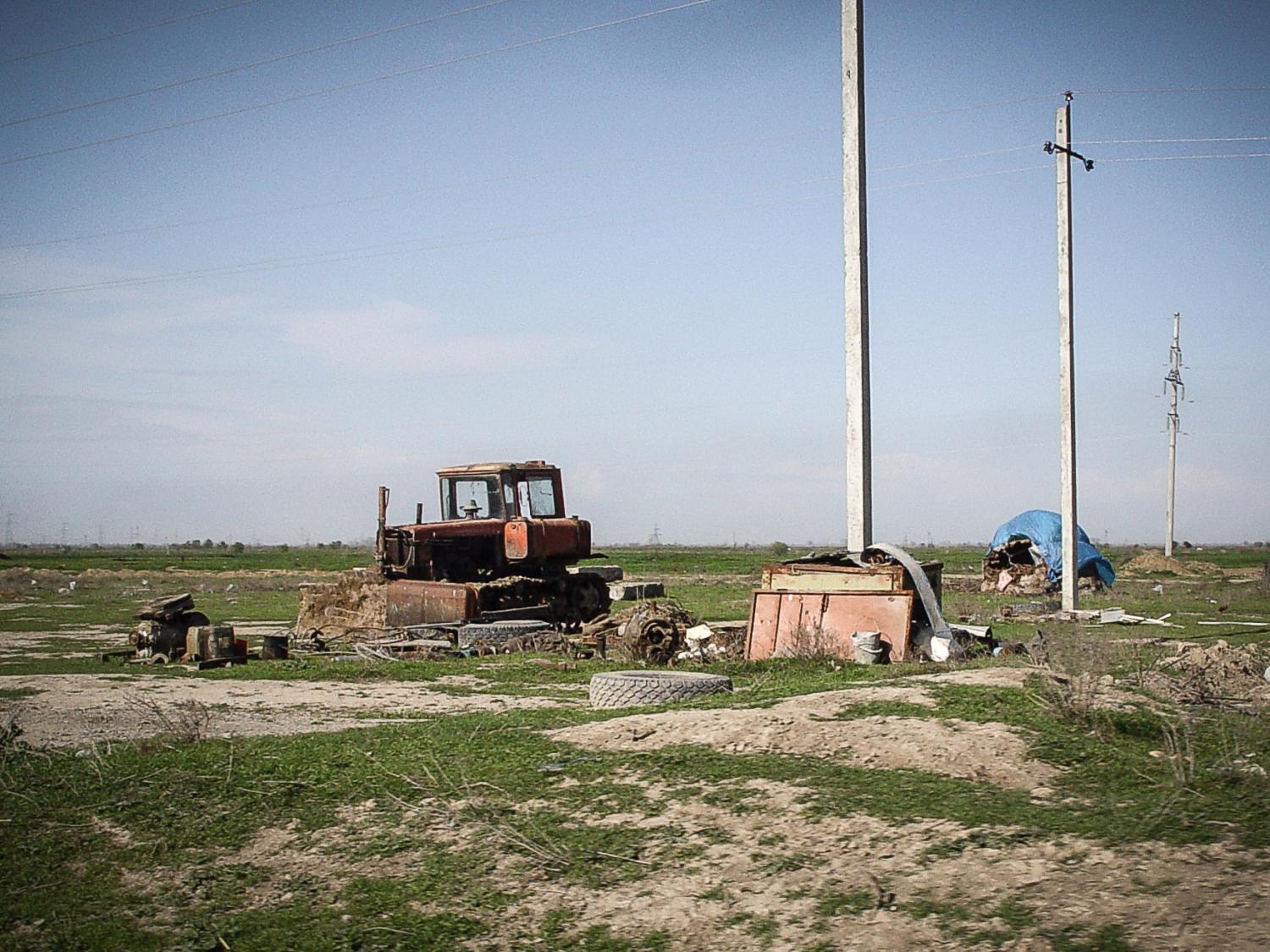
Abandoned equipment outside of Bilasuvar.
It wasn’t until the presidency of Heydar Aliyev - revered throughout the country - in the mid-90s that a sense of stability took place. Critical structures such as credit, business support, and market access were created from scratch. A commercial sector slowly emerged and since 1997 Azerbaijan’s agricultural growth had outperformed the average growth for all CIS countries.
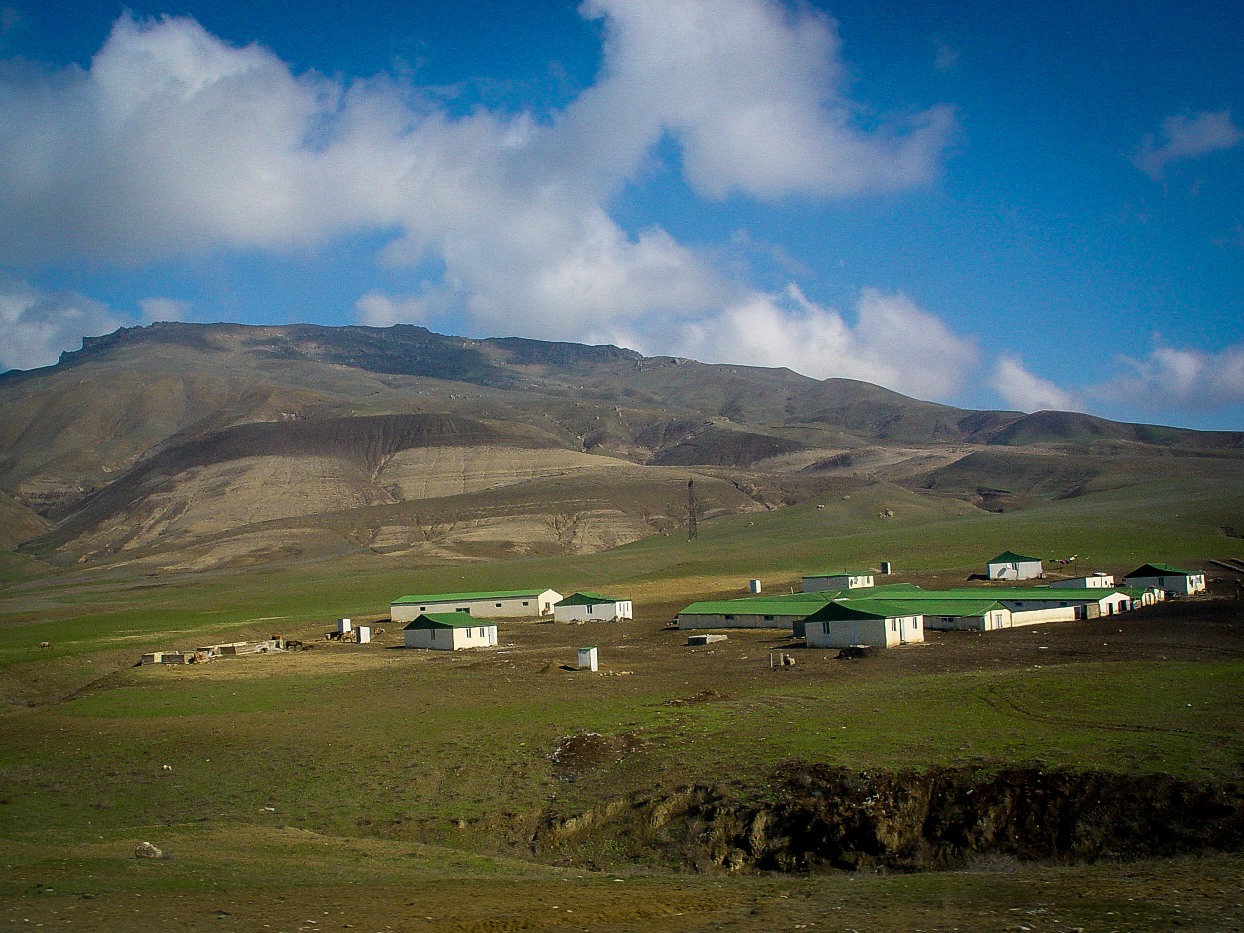
Hills on the road to Agsu.
However, the situation is still dire. Government intervention has been focused on price subsidies rather than infrastructure. Even worse, only 3.5% of the state budget accounted for agricultural investment. This has led to a market economy where Azerbaijan imports oranges from Iran rather than its own southern regions because transportation is so difficult, despite these being far superior quality.
Serving the Untouched
One of the core needs of farmers is access to proper credit. According to a World Bank survey, in Azerbaijan “agriculture and food processing was the sector with the greatest difficulties in accessing finance.” Microfinance is a nascent industry here. AqroInvest Credit Union, a Kiva partner since 2007, was founded in 2001 by 32 Imishli farmers. Today, they serve over 3,500 clients specifically targeting low-income borrowers, many of whom are funded by Kiva.
AqroInvest is the largest credit union in the country and they can’t serve their clients fast enough. They currently have a waiting list of 300 potential borrowers. “Kiva is our most important partner,” Ayyub Ahmadov, the founder and CEO, tells me. Month to month, the funds provided by Kiva sustain their outreach to the communities they serve.
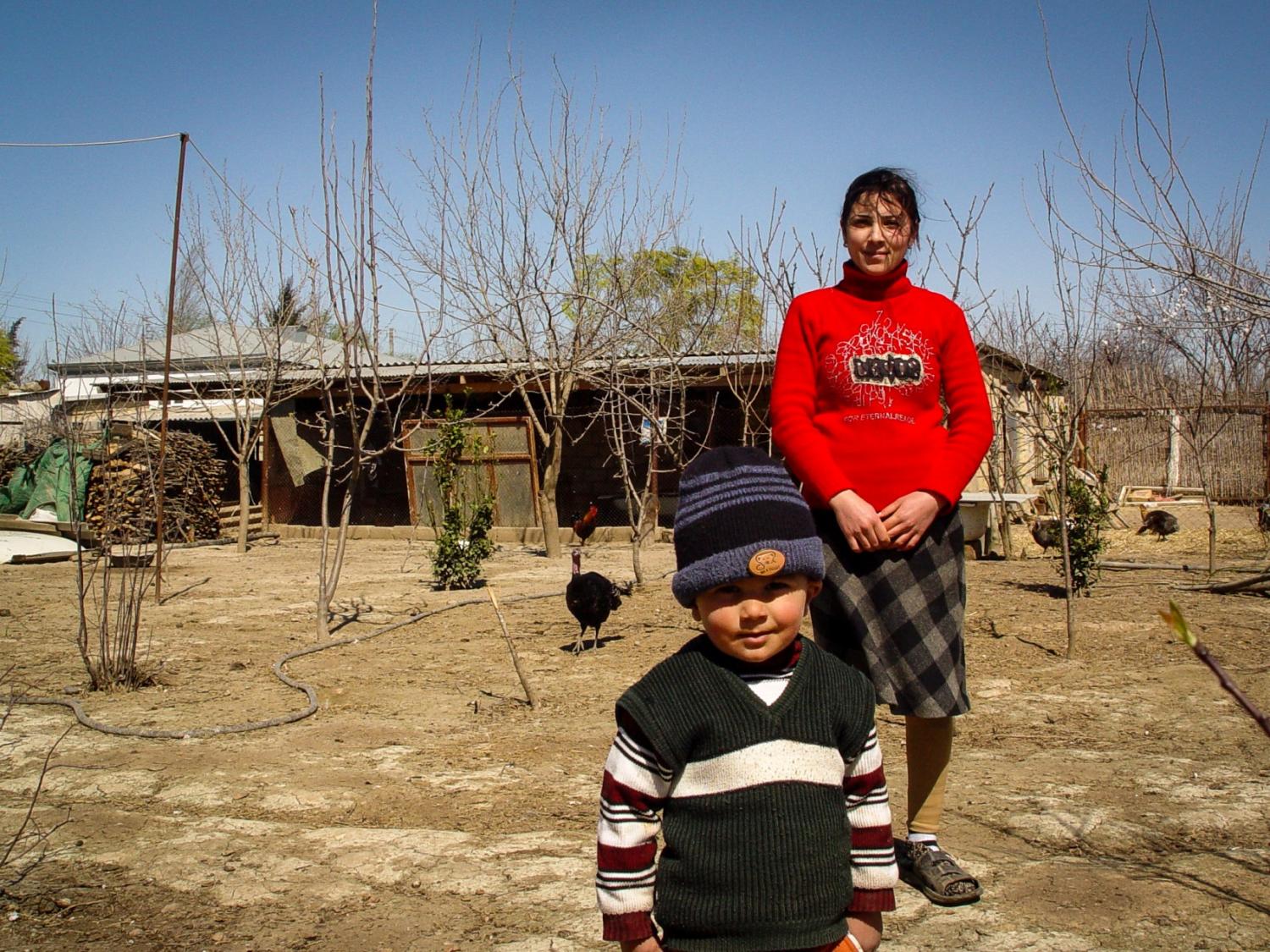
Immi, here with her 3 year old son, currently is repaying a Kiva loan from AqroInvest for seeds and fertilizer for her crops. Like so many in the southwest region of Bilasuvar agriculture is her only source of income. Her husband borrows his brother’s car to transport produce into town to sell.
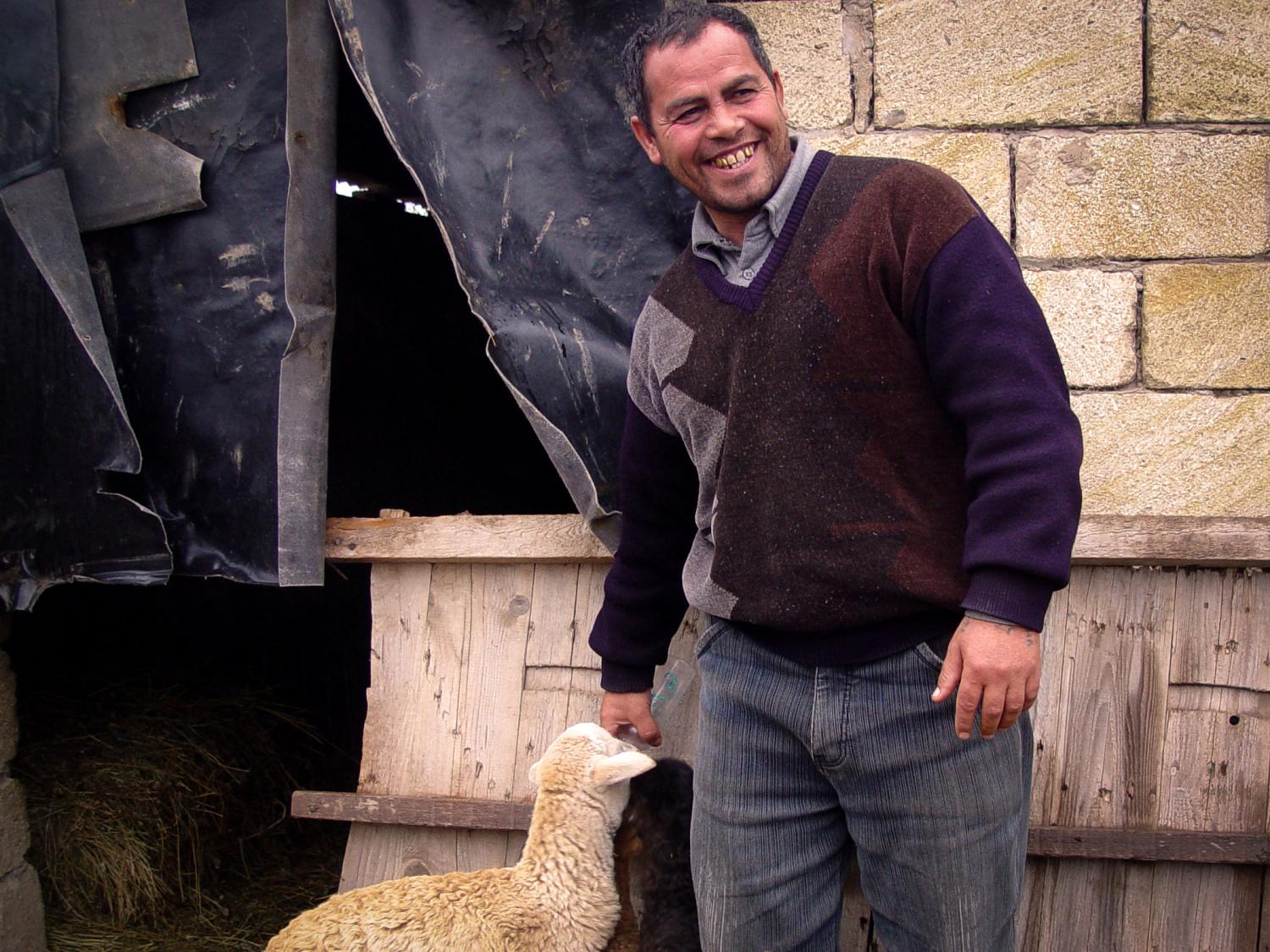
Safadur is paying back a loan from Kiva’s partner VisionFund AzerCredit. He runs a store in Sabirabad but longed for raising livestock ever since he learned it from his father as a young boy. Now he fattens sheep to sell for a good profit and hopes to make this his primary business. Private microfinance institutions such as AqroInvest and AzerCredit are the only line of support many farmers have.
March is the start of the planting season and a critical time for distributing loans to farmers. You can browse the current loans for Azerbaijan on Kiva’s lending page.
Dimitri Zakharov is a Kiva Fellow (KF20) currently roaming Azerbaijan. He has been living in Baku and working with three diverse field partners: Komak Credit Union, which lends primarily to internally displaced persons (IDPs) from the Nagorno-Karabakh War; Aqroinvest Credit Union, which focuses on both IDPs and Azerbaijan’s rural poor; and VisionFund AzerCredit, Kiva’s newest and largest field partner in Azerbaijan. Join the lending team Supporters of Azerbaijan, and make a loan to a Komak, Aqroinvest, or AzerCredit borrower today!
PREVIOUS ARTICLE
Empanadas de Pino: A Loan Officer's Support for Her Borrowers →NEXT ARTICLE
Solar Solutions in Western Kenya - One Woman's Quest to Change Her Community →













